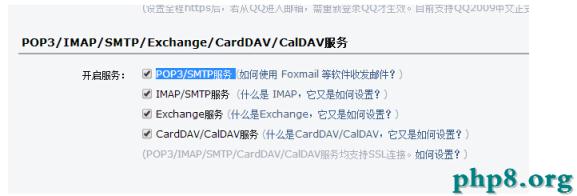Java 發送郵件。本站提示廣大學習愛好者:(Java 發送郵件)文章只能為提供參考,不一定能成為您想要的結果。以下是Java 發送郵件正文
運用Java使用順序發送E-mail非常復雜,但是首先你應該在你的機器上裝置JavaMail API 和Java Activation Framework (JAF) 。
你可以在 JavaMail (Version 1.2) 下載最新的版本。
你可以再 在JAF (Version 1.1.1)下載最新的版本。
下載並解壓這些文件,最下層文件夾你會發現很多的jar文件。你需求將mail.jar和activation.jar 添加到你的CLASSPATH中。
假如你運用第三方郵件服務器如QQ的SMTP服務器,可檢查文章底部用戶認證完好的實例。
上面是一個發送復雜E-mail的例子。假定你的localhost曾經銜接到網絡。
// 文件名 SendEmail.java
import java.util.*;
import javax.mail.*;
import javax.mail.internet.*;
import javax.activation.*;
public class SendEmail
{
public static void main(String [] args)
{
// 收件人電子郵箱
String to = "[email protected]";
// 發件人電子郵箱
String from = "[email protected]";
// 指定發送郵件的主機為 localhost
String host = "localhost";
// 獲取零碎屬性
Properties properties = System.getProperties();
// 設置郵件服務器
properties.setProperty("mail.smtp.host", host);
// 獲取默許session對象
Session session = Session.getDefaultInstance(properties);
try{
// 創立默許的 MimeMessage 對象
MimeMessage message = new MimeMessage(session);
// Set From: 頭部頭字段
message.setFrom(new InternetAddress(from));
// Set To: 頭部頭字段
message.addRecipient(Message.RecipientType.TO,
new InternetAddress(to));
// Set Subject: 頭部頭字段
message.setSubject("This is the Subject Line!");
// 設置音訊體
message.setText("This is actual message");
// 發送音訊
Transport.send(message);
System.out.println("Sent message successfully....");
}catch (MessagingException mex) {
mex.printStackTrace();
}
}
}
編譯並運轉這個順序來發送一封復雜的E-mail:
$ java SendEmail Sent message successfully....
假如你想發送一封e-mail給多個收件人,那麼運用上面的辦法來指定多個收件人ID:
void addRecipients(Message.RecipientType type,
Address[] addresses)
throws MessagingException
上面是關於參數的描繪:
type:要被設置為TO, CC 或許BCC. 這裡CC 代表抄送、BCC 代表機密抄送y. 舉例:Message.RecipientType.TO
addresses: 這是email ID的數組。在指定電子郵件ID時,你將需求運用InternetAddress()辦法。
上面是一個發送HTML E-mail的例子。假定你的localhost曾經銜接到網絡。
和上一個例子很類似,除了我們要運用setContent()辦法來經過第二個參數為"text/html",來設置內容來指定要發送HTML內容。
// 文件名 SendHTMLEmail.java
import java.util.*;
import javax.mail.*;
import javax.mail.internet.*;
import javax.activation.*;
public class SendHTMLEmail
{
public static void main(String [] args)
{
// 收件人電子郵箱
String to = "[email protected]";
// 發件人電子郵箱
String from = "[email protected]";
// 指定發送郵件的主機為 localhost
String host = "localhost";
// 獲取零碎屬性
Properties properties = System.getProperties();
// 設置郵件服務器
properties.setProperty("mail.smtp.host", host);
// 獲取默許的 Session 對象。
Session session = Session.getDefaultInstance(properties);
try{
// 創立默許的 MimeMessage 對象。
MimeMessage message = new MimeMessage(session);
// Set From: 頭部頭字段
message.setFrom(new InternetAddress(from));
// Set To: 頭部頭字段
message.addRecipient(Message.RecipientType.TO,
new InternetAddress(to));
// Set Subject: 頭字段
message.setSubject("This is the Subject Line!");
// 發送 HTML 音訊, 可以拔出html標簽
message.setContent("<h1>This is actual message</h1>",
"text/html" );
// 發送音訊
Transport.send(message);
System.out.println("Sent message successfully....");
}catch (MessagingException mex) {
mex.printStackTrace();
}
}
}
編譯並運轉此順序來發送HTML e-mail:
$ java SendHTMLEmail Sent message successfully....
上面是一個發送帶有附件的 E-mail的例子。假定你的localhost曾經銜接到網絡。
// 文件名 SendFileEmail.java
import java.util.*;
import javax.mail.*;
import javax.mail.internet.*;
import javax.activation.*;
public class SendFileEmail
{
public static void main(String [] args)
{
// 收件人電子郵箱
String to = "[email protected]";
// 發件人電子郵箱
String from = "[email protected]";
// 指定發送郵件的主機為 localhost
String host = "localhost";
// 獲取零碎屬性
Properties properties = System.getProperties();
// 設置郵件服務器
properties.setProperty("mail.smtp.host", host);
// 獲取默許的 Session 對象。
Session session = Session.getDefaultInstance(properties);
try{
// 創立默許的 MimeMessage 對象。
MimeMessage message = new MimeMessage(session);
// Set From: 頭部頭字段
message.setFrom(new InternetAddress(from));
// Set To: 頭部頭字段
message.addRecipient(Message.RecipientType.TO,
new InternetAddress(to));
// Set Subject: 頭字段
message.setSubject("This is the Subject Line!");
// 創立音訊局部
BodyPart messageBodyPart = new MimeBodyPart();
// 音訊
messageBodyPart.setText("This is message body");
// 創立多重音訊
Multipart multipart = new MimeMultipart();
// 設置文本音訊局部
multipart.addBodyPart(messageBodyPart);
// 附件局部
messageBodyPart = new MimeBodyPart();
String filename = "file.txt";
DataSource source = new FileDataSource(filename);
messageBodyPart.setDataHandler(new DataHandler(source));
messageBodyPart.setFileName(filename);
multipart.addBodyPart(messageBodyPart);
// 發送完好音訊
message.setContent(multipart );
// 發送音訊
Transport.send(message);
System.out.println("Sent message successfully....");
}catch (MessagingException mex) {
mex.printStackTrace();
}
}
}
編譯並運轉你的順序來發送一封帶有附件的郵件。
$ java SendFileEmail Sent message successfully....
假如需求提供用戶名和密碼給e-mail服務器來到達用戶認證的目的,你可以經過如下設置來完成:
props.put("mail.smtp.auth", "true");
props.setProperty("mail.user", "myuser");
props.setProperty("mail.password", "mypwd");
e-mail其他的發送機制和上述堅持分歧。
需求用戶名密碼驗證郵件發送實例:本實例以QQ郵件服務器為例,你需求在登錄QQ郵箱後台在"設置"=》賬號中開啟POP3/SMTP服務 ,如下圖所示:

Java 代碼如下:
// 需求用戶名密碼郵件發送實例
//文件名 SendEmail2.java
//本實例以QQ郵箱為例,你需求在qq後台設置
import java.util.Properties;
import javax.mail.Authenticator;
import javax.mail.Message;
import javax.mail.MessagingException;
import javax.mail.PasswordAuthentication;
import javax.mail.Session;
import javax.mail.Transport;
import javax.mail.internet.InternetAddress;
import javax.mail.internet.MimeMessage;
public class SendEmail2
{
public static void main(String [] args)
{
// 收件人電子郵箱
String to = "[email protected]";
// 發件人電子郵箱
String from = "[email protected]";
// 指定發送郵件的主機為 localhost
String host = "smtp.qq.com"; //QQ 郵件服務器
// 獲取零碎屬性
Properties properties = System.getProperties();
// 設置郵件服務器
properties.setProperty("mail.smtp.host", host);
properties.put("mail.smtp.auth", "true");
// 獲取默許session對象
Session session = Session.getDefaultInstance(properties,new Authenticator(){
public PasswordAuthentication getPasswordAuthentication()
{
return new PasswordAuthentication("[email protected]", "qq郵箱密碼"); //發件人郵件用戶名、密碼
}
});
try{
// 創立默許的 MimeMessage 對象
MimeMessage message = new MimeMessage(session);
// Set From: 頭部頭字段
message.setFrom(new InternetAddress(from));
// Set To: 頭部頭字段
message.addRecipient(Message.RecipientType.TO,
new InternetAddress(to));
// Set Subject: 頭部頭字段
message.setSubject("This is the Subject Line!");
// 設置音訊體
message.setText("This is actual message");
// 發送音訊
Transport.send(message);
System.out.println("Sent message successfully....from cnblogs.com");
}catch (MessagingException mex) {
mex.printStackTrace();
}
}
}